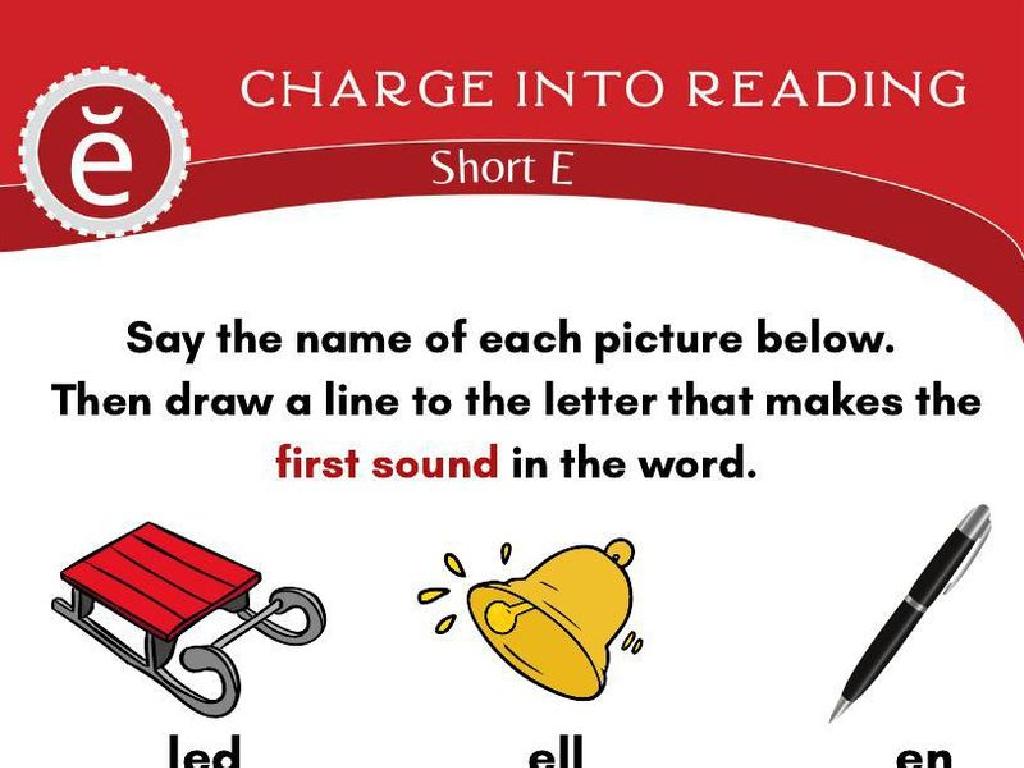Find Missing Angles In Quadrilaterals Ii
Subject: Math
Grade: Seventh grade
Topic: Two-Dimensional Figures
Please LOG IN to download the presentation. Access is available to registered users only.
View More Content
Exploring Quadrilaterals and Their Angles
– Recap: What is a quadrilateral?
– A four-sided polygon with four angles
– Types of quadrilaterals
– Squares, rectangles, trapezoids, and more
– Angles in quadrilaterals
– Sum of angles always 360 degrees
– Finding missing angles
– Use known angles to find unknown ones
|
Begin with a brief review of what a quadrilateral is, emphasizing its four-sided nature. Introduce the various types of quadrilaterals, such as squares, rectangles, and trapezoids, highlighting their properties and differences. Explain that the sum of the interior angles in any quadrilateral is always 360 degrees. Teach students how to apply this knowledge along with algebraic equations to find missing angles when given some angles. Use examples to illustrate the process, and prepare to engage students with practice problems where they will calculate missing angles for different types of quadrilaterals.
Properties of Quadrilaterals
– Four sides and angles
– Sum of angles equals 360°
– Add all interior angles to find missing ones
– Parallelograms properties
– Opposite sides are parallel and equal
– Rectangles and others
– Explore squares, rhombuses, and trapezoids
|
This slide introduces students to the fundamental properties of quadrilaterals. Emphasize that all quadrilaterals have four sides and four angles. Highlight the key fact that the sum of the interior angles of any quadrilateral is always 360 degrees, which is crucial for solving problems related to finding missing angles. Discuss the specific properties of parallelograms, such as having opposite sides that are both parallel and equal in length. Extend the discussion to other quadrilaterals like rectangles, squares, rhombuses, and trapezoids, each having unique properties. Encourage students to use these properties to solve problems and find missing angles. Provide examples and practice problems to reinforce the concepts.
Finding Missing Angles in Quadrilaterals
– Sum of angles in quadrilaterals
– The sum of interior angles in any quadrilateral is 360 degrees.
– Example: Finding a missing angle
– If three angles are known, subtract their sum from 360 to find the fourth.
– Class practice problem
– Solve a problem together to apply what we’ve learned.
|
Begin by explaining that the sum of the interior angles in any quadrilateral is always 360 degrees. This is a key concept that will help students solve for missing angles. Provide an example where three angles are given, and students must find the fourth by subtracting the sum of the known angles from 360. After the example, present a practice problem for the class to solve as a group. This will reinforce the concept and ensure students understand how to apply the rule. Encourage students to explain their thought process as they solve the problem to foster a deeper understanding.
Using Algebra to Find Missing Angles in Quadrilaterals
– Set up equations for unknown angles
– Use known angle measures to write equations for the angles labeled with variables.
– Example: Solve for angle x
– Given three angles, use the equation 360 – (sum of known angles) = x to find the missing angle.
– Practice with algebraic expressions
– Work through problems to apply the equation-solving process.
– Sum of angles in a quadrilateral
– Remember, the angles in any quadrilateral add up to 360 degrees.
|
This slide introduces the concept of using algebra to find missing angles in quadrilaterals. Start by explaining how to set up equations based on the sum of angles in a quadrilateral, which is always 360 degrees. Provide an example where students solve for an unknown angle labeled x, using the sum of the known angles. Follow this with guided practice, allowing students to work through algebraic expressions to find missing angles. Emphasize the importance of understanding that the sum of interior angles in a quadrilateral will always be 360 degrees, which is the foundation for setting up their equations correctly. Encourage students to ask questions during the practice to ensure they grasp the concept.
Real-life Applications of Quadrilateral Angles
– Importance of angle calculation
Calculating angles is crucial in various fields for design and construction.
– Architecture and engineering uses
Angles are key in designing buildings, bridges, and machines.
– Quadrilaterals in daily life
Think of windows, books, and tables – all quadrilaterals.
– Interactive Q&A session
|
This slide aims to connect the mathematical concept of finding missing angles in quadrilaterals with practical applications in the real world. Emphasize the importance of angle calculations in fields like architecture and engineering, where precision is vital for safety and functionality. Encourage students to observe their surroundings and identify quadrilaterals in everyday objects. The interactive Q&A session will engage students, allowing them to actively participate and think about how mathematics is integrated into their daily lives. Prepare to guide the discussion with examples such as the role of angles in constructing stable structures and the aesthetics of design.
Class Activity: Finding Missing Angles in Quadrilaterals
– Distribute quadrilateral worksheets
– Pair up to solve for missing angles
– Use angle relationships and properties of quadrilaterals to find unknown angles
– Explain reasoning to your partner
– Articulate your thought process and compare with your partner’s approach
– Discuss solutions as a class
|
This activity is designed to promote collaborative learning and critical thinking. Students will work in pairs to apply their knowledge of quadrilaterals and their properties to find missing angles. By explaining their reasoning to each other, they will reinforce their understanding and communication skills. Distribute worksheets with a variety of quadrilaterals, ensuring that each pair has a different set to promote a diverse discussion later. As students work, circulate the room to offer guidance and encourage them to consider both the sum of angles in a quadrilateral (360 degrees) and the properties of specific types of quadrilaterals (parallelograms, rectangles, etc.). After the activity, bring the class together to discuss different strategies and solutions.
Review: Finding Missing Angles in Quadrilaterals
– Summarize angle-finding methods
– Use sum of angles formula (360°) and subtraction
– Emphasize quadrilateral properties
– Knowing properties aids in problem-solving
– Address remaining questions
– Ensure clarity and resolve doubts
– Reinforce learning with examples
– Apply methods to different quadrilateral types
|
As we wrap up today’s lesson, let’s review the key methods for finding missing angles in quadrilaterals. Remember, the sum of interior angles in any quadrilateral is 360 degrees. By subtracting the known angles from 360, we can find the unknown ones. Understanding the specific properties of different quadrilaterals, such as squares, rectangles, and parallelograms, is crucial as it can simplify the process. Now, let’s take a moment to answer any questions you might still have to ensure everyone is clear on the concepts. To solidify our understanding, we’ll go through a few examples together, applying what we’ve learned to different types of quadrilaterals.





